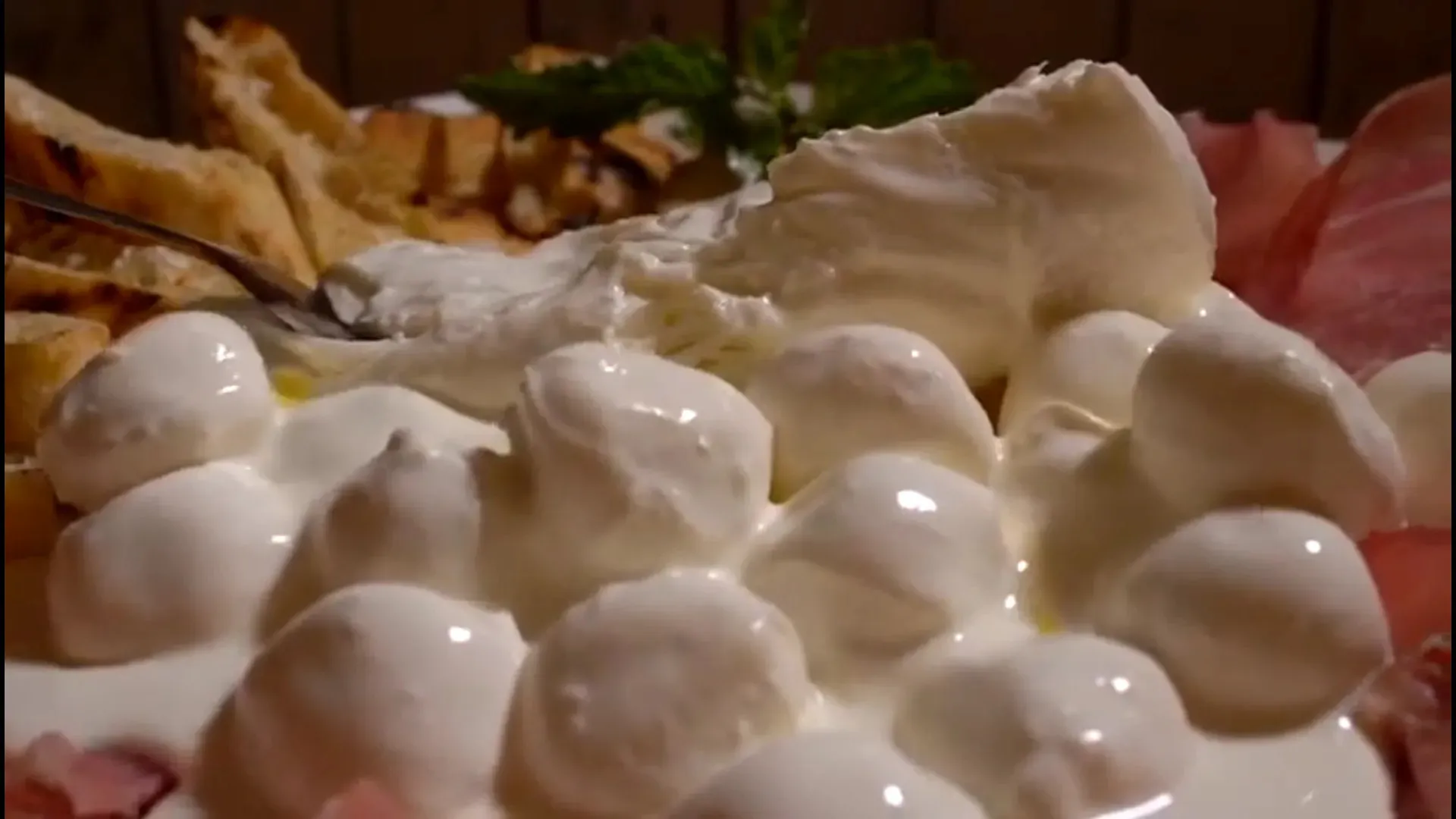Cisternino, what to do and see in Cisternino
Updated at: 01-12-2024
How this content can help you:
Sure, here is the translation in English:- You will discover the historic center and the spontaneous architecture of Cisternino.
- You will learn what to see in Cisternino: Torre Grande, historic churches, masserie.
- You will get to know the history of Cisternino, from its Paleolithic origins to the Middle Ages.
- You will discover local traditions and gastronomy, such as "bombette".
- You will explore the typical trulli and the nature of the Itria Valley.
- You will know which beaches are nearby and how to reach them.
- You will visit the Itria Valley and towns like Locorotondo and Alberobello.
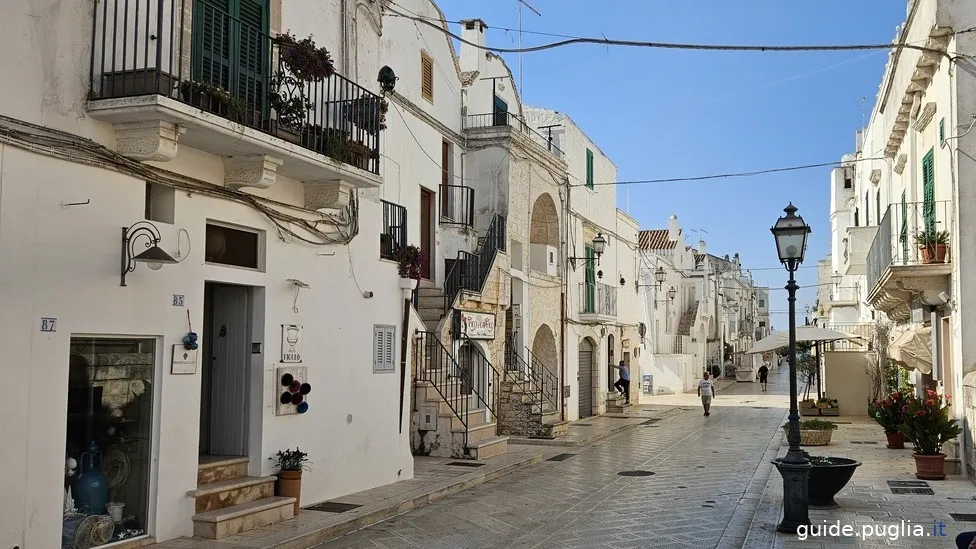
Why is Cisternino called the "Pearl of the Itria Valley"?
It is called the "Pearl of the Itria Valley" because of its enchanting historic center, characterized by white houses, charming alleys, and picturesque squares that reflect the typical Apulian architecture.
Cisternino is a town with 11,205 inhabitants in the province of Brindisi, located among the hills in the southern part of the Murgia dei Trulli.
It is a maze of alleys and narrow streets, embraced by white stone houses, enriched by scenic and lively squares that overlook some of the most beautiful views in Puglia.
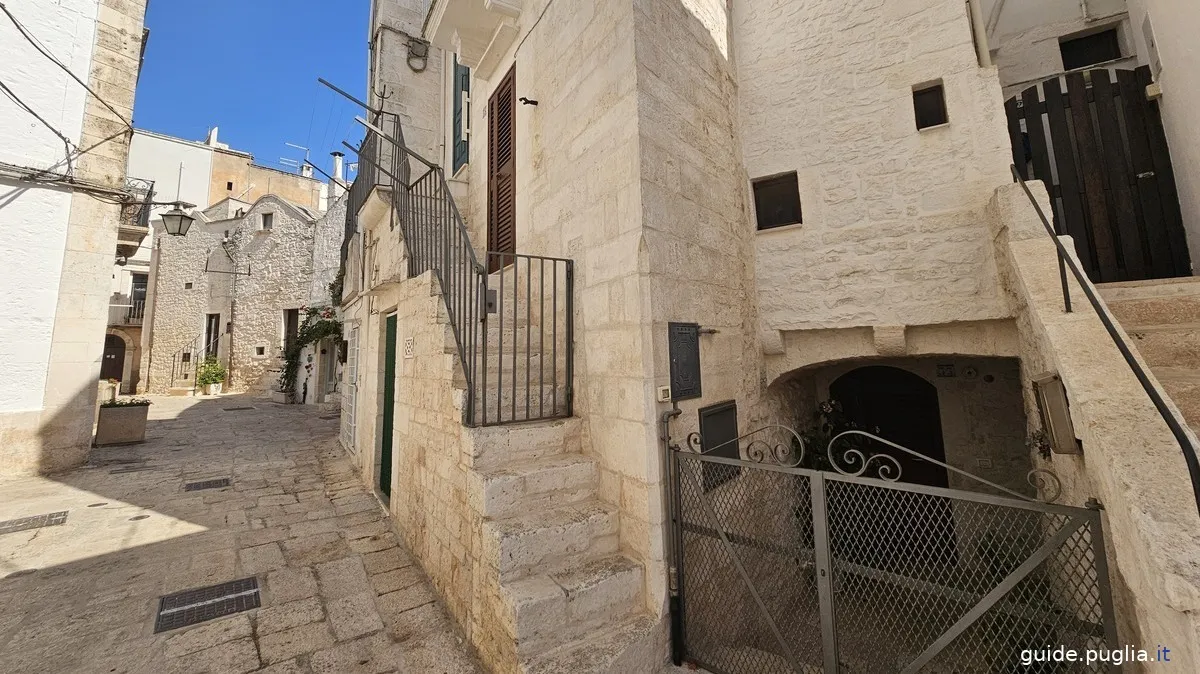
The town is built with the typical white houses of the area and is immersed in the lush countryside of the Valle d'Itria, rich in centuries-old olive trees and historic Trulli.
Cisternino, along with Locorotondo and Alberobello, is often referred to as the "Pearl of the Valle d'Itria" due to the spectacular landscape, with its lush nature, Trulli, and the spontaneous architecture of the farmhouses and historic center.
Thanks to the strong connection of the area with history and traditions, the care of the landscape has always been a priority, transforming tourism into the most important asset of this town.
Visiting Cisternino, you will find yourself immersed in a typical Mediterranean hilly area, deeply connected to its traditions, ancient culture, and historic agricultural economy.
€ 160
What to See in Cisternino
Some of the most beautiful things to see in Cisternino include:
- Historic Center
- Torre Grande (Civic Tower)
- Chiesa Madre di San Nicola
- Chiesa di Santa Lucia (1500)
- Santuario della Madonna d'Ibernia (Madonna de Bernis)
- Chiesa di Santa Maria di Costantinopoli (1600)
- Chiesa di San Cataldo (1600)
- Ponte della Madonnina
- Chiesa di Cristo
- Torre dell'Orologio
- Giardini di Piazza Garibaldi
- Masserie
- Bosco Monti Comunali
- Trulli
Historic Center
Entering the historic center of Cisternino, you immerse yourself in a fascinating labyrinth of narrow alleys, bright white staircases, and picturesque arches that tell centuries of history and traditions.

This historic center is one of the best examples in Puglia of Spontaneous Architecture, a type of construction developed without the involvement of engineers or architects, but through the transfer of knowledge and artisanal techniques from one generation to the next.
The houses, with their whitewashed facades and small internal courtyards, are organically arranged, perfectly adapting to the terrain and the needs of daily life.

Despite its small size, the historic center of Cisternino is a true gem, where every corner tells a story. Although it doesn't boast a large number of monuments, its intimate and cozy atmosphere allows you to explore it calmly, savoring every detail.
It is a place that can be visited easily in a day, letting yourself be charmed by the architectural harmony and timeless beauty that pervades every corner of the town.
Among the main historical buildings that punctuate the town are:
- Palazzo Vescovile
- Palazzo del Governatore
- Palazzo Amati
- Palazzo Lagravinese
- Torre Capece
Palazzo Vescovile
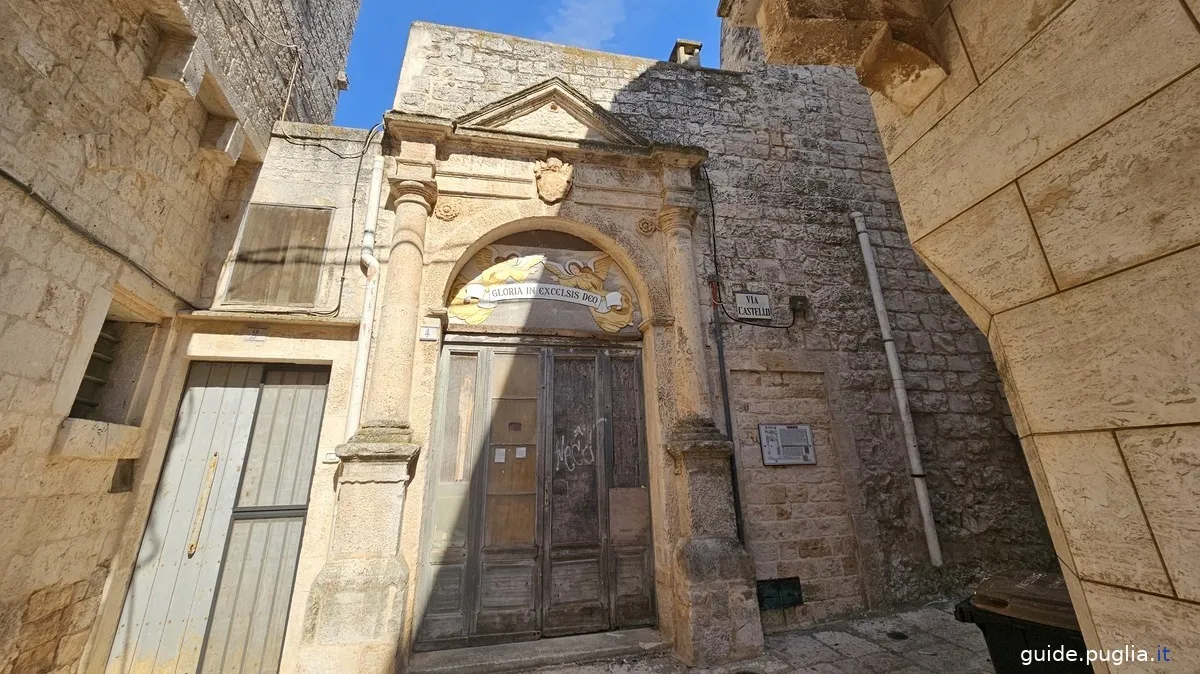
The Palazzo Vescovile in Cisternino is one of the most important and representative buildings in the historic center, closely linked to the religious and administrative history of the town. Its construction probably dates back to the 16th century, although it was remodeled and expanded in later periods, particularly during the 18th century.
The Palazzo Vescovile served as the bishop's residence and as the administrative center of the diocese of Cisternino, which was an important reference point for the religious life of the community.

The palace represented not only spiritual power but also a center of political and social control during the centuries when the Church had a strong influence on the daily lives of the citizens.
Palazzo del Governatore
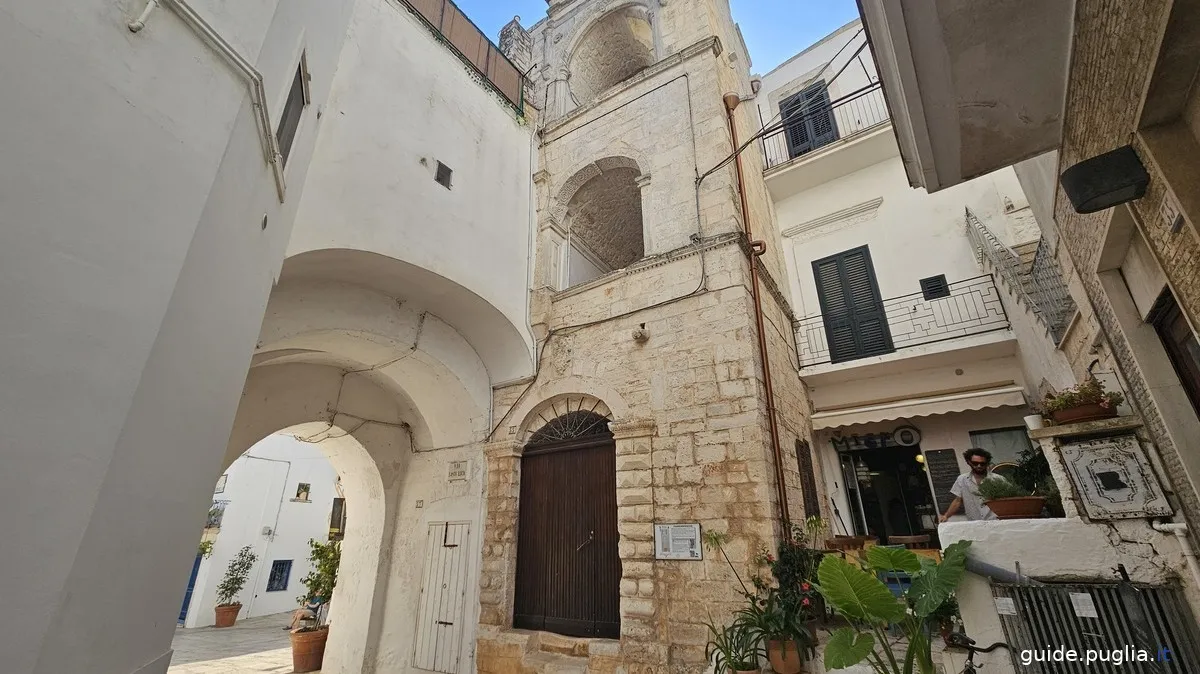
The Palazzo del Governatore is another significant historical building located in the center of Cisternino, symbolizing the civil power that complemented the religious authority represented by the Palazzo Vescovile.
This building dates back to the 18th century and served as the center of the town's civil administration. The Palazzo del Governatore was the hub of civil power in Cisternino.
Here, legal matters were administered, and public affairs were managed. The building represented the center of the town's political and social life, where the governor, appointed by the central authority, exercised his control over the community.
Palazzo Amati
Palazzo Amati testifies to the wealth and influence of the local noble families over the centuries, contributing to defining the distinctive character of the town.
Palazzo Amati was originally built in the 17th century as the residence of the noble Amati family, one of the most influential in Cisternino. Over the centuries, the palace underwent several renovations and expansions, always maintaining its residential and representative function.
In addition to serving as a private residence, the palace hosted social and cultural events, acting as a meeting center for the local elite.
Today, Palazzo Amati is an example of how traditional architecture can harmonize with modern needs. The palace is often used for cultural events, art exhibitions, and ceremonies, contributing to the social and cultural life of the town.
Palazzo Lagravinese
Palazzo Lagravinese embodies the spirit of the influential families who contributed to the development and prosperity of the town over the centuries.
Built in the 18th century, Palazzo Lagravinese served as the residence of the Lagravinese family, one of the most influential in Cisternino. The family played a key role in the town's economic and political life, contributing to the construction of infrastructure and the promotion of local arts and culture.
Over the years, the palace underwent various modifications to adapt to social and cultural changes, while maintaining its historical charm.
Palazzo Lagravinese is today considered an important historical monument, symbolizing the rich cultural heritage of Cisternino. It is often used for cultural events, art exhibitions, and public meetings, serving as a bridge between the town's past and present.
Torre Capece
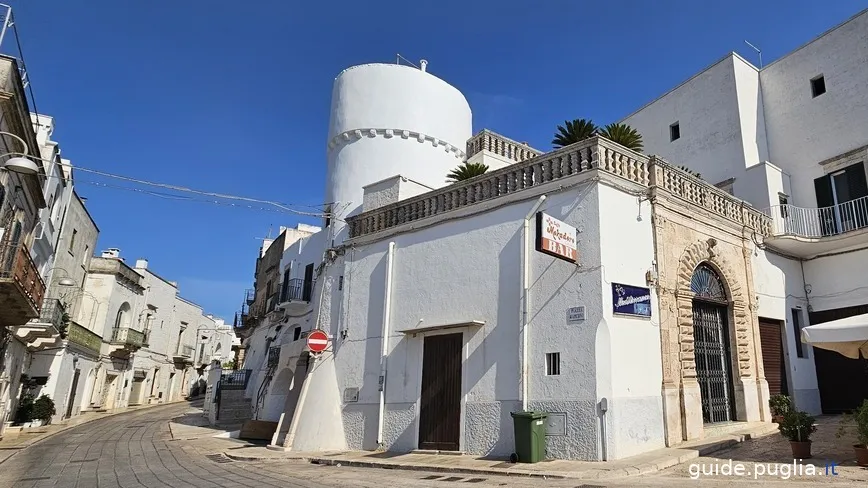
The Torre Capece is one of the most representative symbols of the medieval fortifications that once defended the town of Cisternino. Built in the 13th century, during the Norman period, the tower was an essential part of the town's defensive system, designed to repel enemy attacks and protect the inhabitants.
Its thick walls, made of local limestone, ensured great resistance and durability, making the tower a formidable stronghold.
The top of the tower, once probably crowned by battlements now partially lost, offered additional protection and a strategic observation point. From its elevated position, Torre Capece dominated the surrounding valley, allowing surveillance of the area and signaling imminent dangers.
Originally, the tower was an integral part of the town's fortifications, tasked with protecting the main entrance to the historic center.
The tower takes its name from the Capece family, one of the most influential in Cisternino. As the centuries passed and military threats declined, the tower's defensive function transformed, becoming a symbol of power and prestige for the family, who integrated it into their noble residence.
Today, Torre Capece is a precious testimony to the medieval origins of Cisternino and one of the few remaining examples of the town's ancient fortifications. Its preservation is essential for understanding the defensive history of the town and the crucial role these structures played in protecting local communities.
Torre Grande (or Torre Civica)
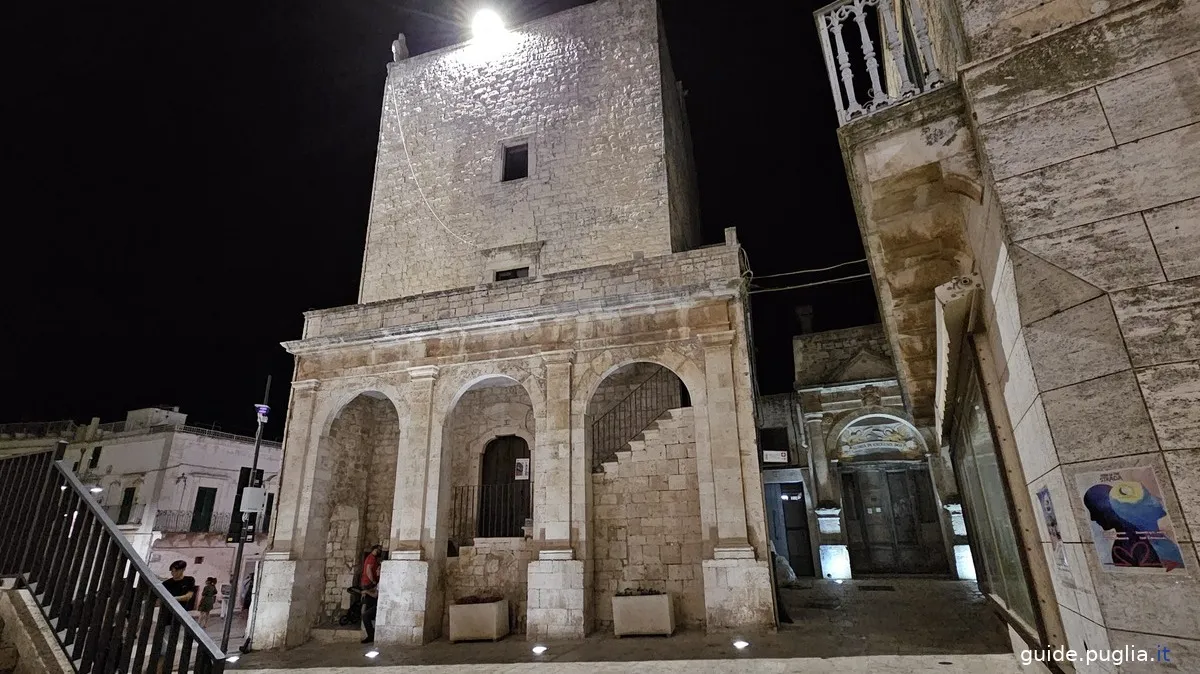
The Torre Grande of Cisternino, also known as the Torre di Porta Grande, is one of the most recognizable symbols of Cisternino.
The Torre Grande of Cisternino is sometimes also called the Torre Civica because, in addition to its original defensive function, it has over time become an important symbol of civil power and the local community.
This tower is an integral part of the ancient fortifications that once surrounded the town, representing a historical testimony to medieval defensive architecture.
Its strategic position allowed it to control access to the town and played a crucial role in defending the community.
At the top of the Norman-Swabian Tower, a statue of Saint Nicholas of Bari has been placed, symbolizing protection over the territory. The statue depicts Saint Nicholas in bishop’s attire, a figure symbolizing the saint's protection over the community of Cisternino.
The statue is clearly visible from various parts of the town, contributing to making the tower a visual and cultural landmark in the urban landscape.
Chiesa Madre di San Nicola
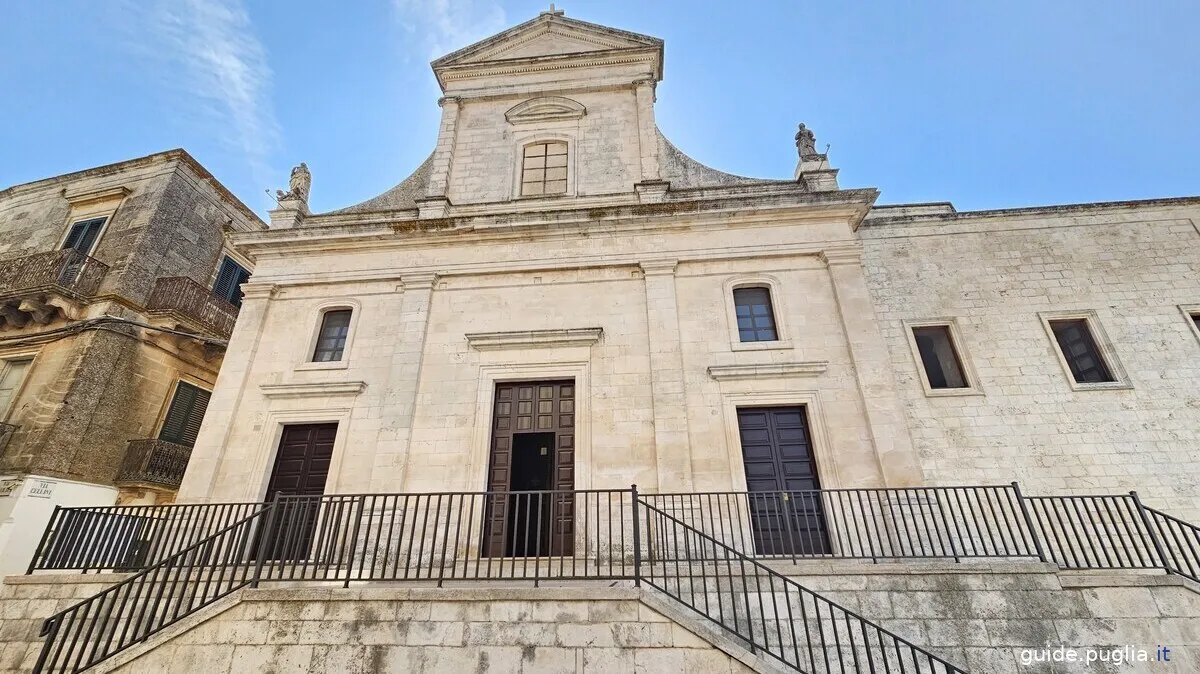
The Chiesa Madre di San Nicola is the main religious building in Cisternino, located in the heart of the town’s historic center, in Piazza Garibaldi. This church is dedicated to Saint Nicholas of Bari, the patron saint of the town.

The Chiesa Madre di San Nicola was built in the 16th century on the site of a paleochristian church, and its reconstruction spurred the revival of a territory abandoned for centuries following the destruction caused by the Goths.
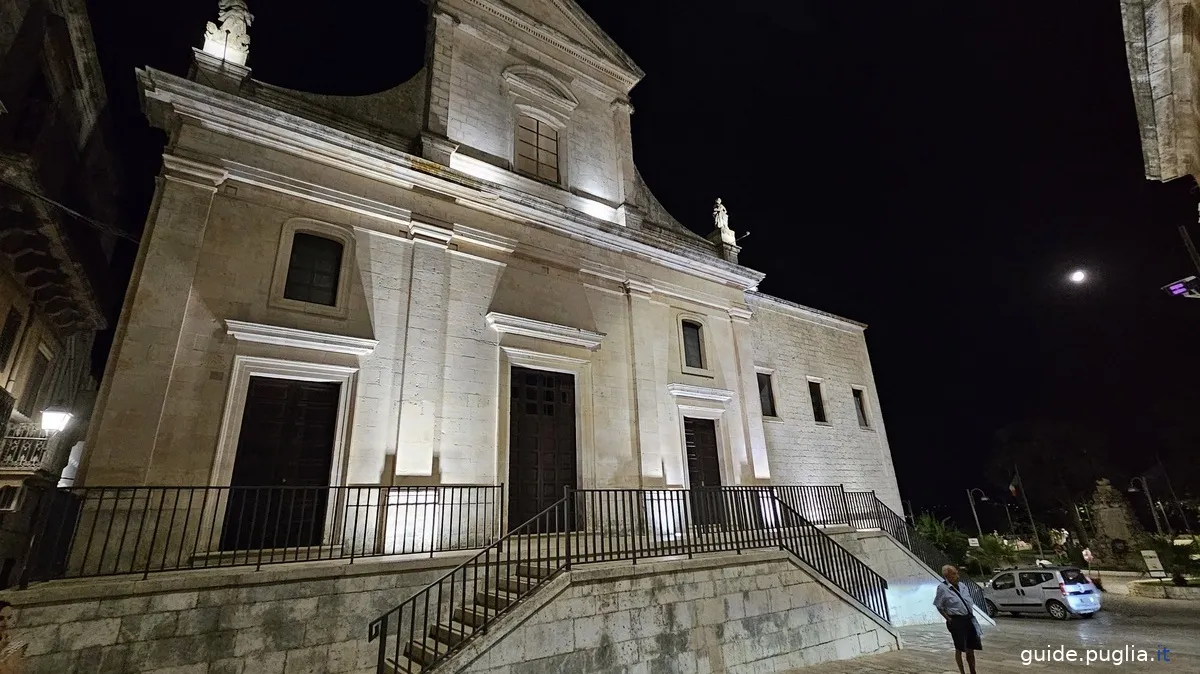
The church is rich in valuable works, including statues, frescoes, and paintings that depict scenes from the life of Saint Nicholas and other saints, as well as sculptures and an ancient organ.
Santuario della Madonna d'Ibernia (Madonna de Bernis)
The Santuario della Madonna d'Ibernia is located just outside the center of Cisternino, in the surrounding countryside. It is an important pilgrimage site, especially during the Easter period.
The origins of the sanctuary are shrouded in legend and popular devotion. It is believed that the worship of the Madonna d'Ibernia has very ancient roots, possibly dating back to the Byzantine period or even pre-Christian times, with the presence of a pagan worship site that was later Christianized.
One of the most widespread legends tells that the statue of the Madonna was brought to Puglia by monks from the East, possibly from the region of Ibernia (a name referring to present-day Spain, but which may also have other connotations). Another version of the legend suggests that the Madonna d'Ibernia protected the territory during invasions and historical hardships, becoming a central figure of protection for the local community.
The area around the sanctuary is rich in Byzantine, Roman, and medieval artifacts.
The fact that many historical artifacts can still be found in the area today suggests that the sanctuary was built on the ruins of an ancient paleochristian church surrounded by a settlement.
Chiesa di Santa Maria di Costantinopoli
The Chiesa di Santa Maria di Costantinopoli, also known as the Chiesa di Sant'Anna, is an 18th-century structure located outside the town, on the road to Martina Franca.
This church, dedicated to the Virgin Mary under the title of Santa Maria di Costantinopoli, is significant for its history, architecture, and role in the religious life of the local community. The church was likely built between the 16th and 17th centuries, during a period when devotion to the Madonna di Costantinopoli was widespread in southern Italy.
The Chiesa di Santa Maria di Costantinopoli is the focal point of several religious celebrations, especially during the feast dedicated to the Madonna, which generally takes place on February 12th. During this festival, the community gathers to participate in solemn masses, processions, and other religious rites, paying homage to the Virgin.
€ 160
Chiesa di San Cataldo
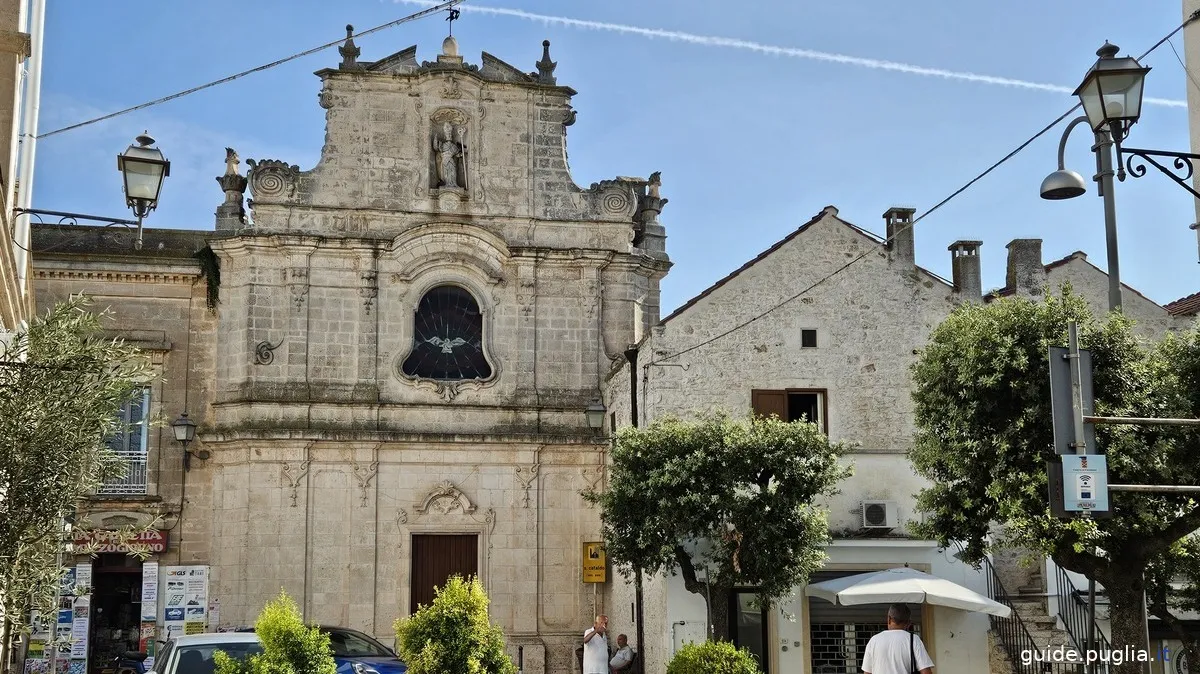
The Chiesa di San Cataldo is located just outside the walls of the historic center, at the end of Corso Umberto. It is of medieval origin, with its construction likely dating back to between the 13th and 14th centuries.
San Cataldo, to whom the church is dedicated, is an Irish saint venerated mainly in Puglia, where his relics are kept in the city of Taranto. The church is a testimony to the spread of the San Cataldo cult in the region and represents one of the many religious buildings erected in his honor throughout southern Italy.

The church is particularly frequented during the celebrations of the Feast of San Cataldo, which takes place on May 8th and 10th. On this occasion, the community of Cisternino gathers to honor the saint with solemn masses, processions, and other religious events.
Ponte della Madonnina
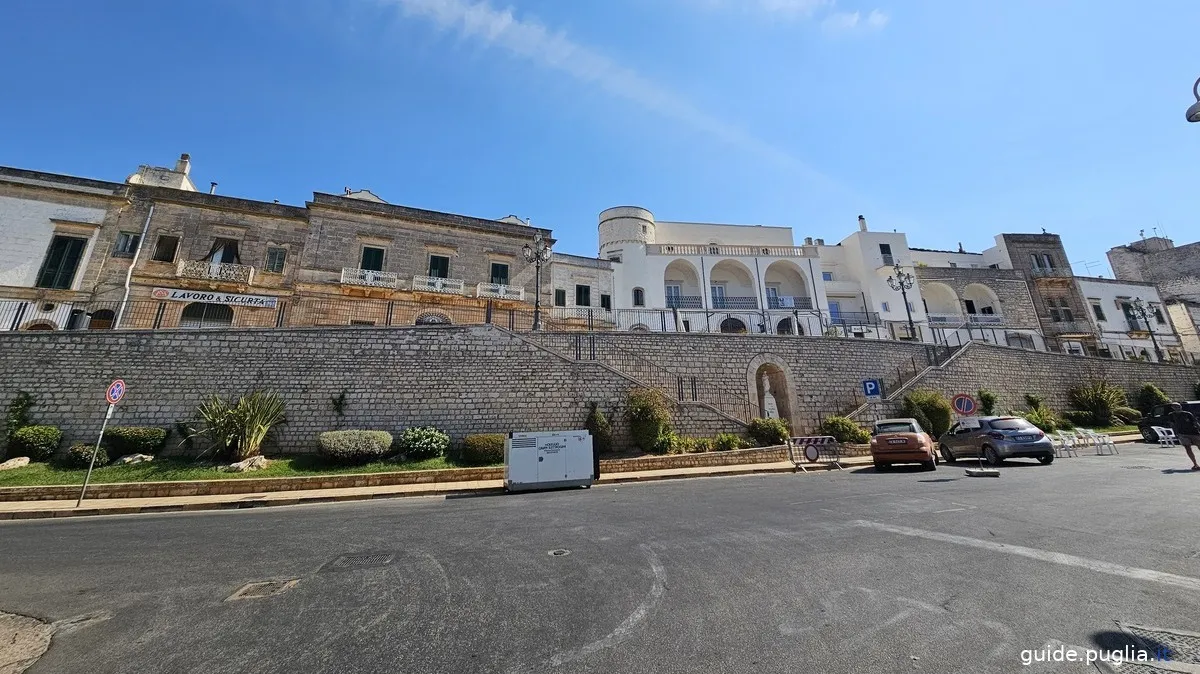
The Ponte della Madonnina is a small but significant bridge located in Cisternino, Puglia. This bridge is named after a small statue of the Madonna placed on it, becoming a symbol of popular devotion and a landmark for the local community.
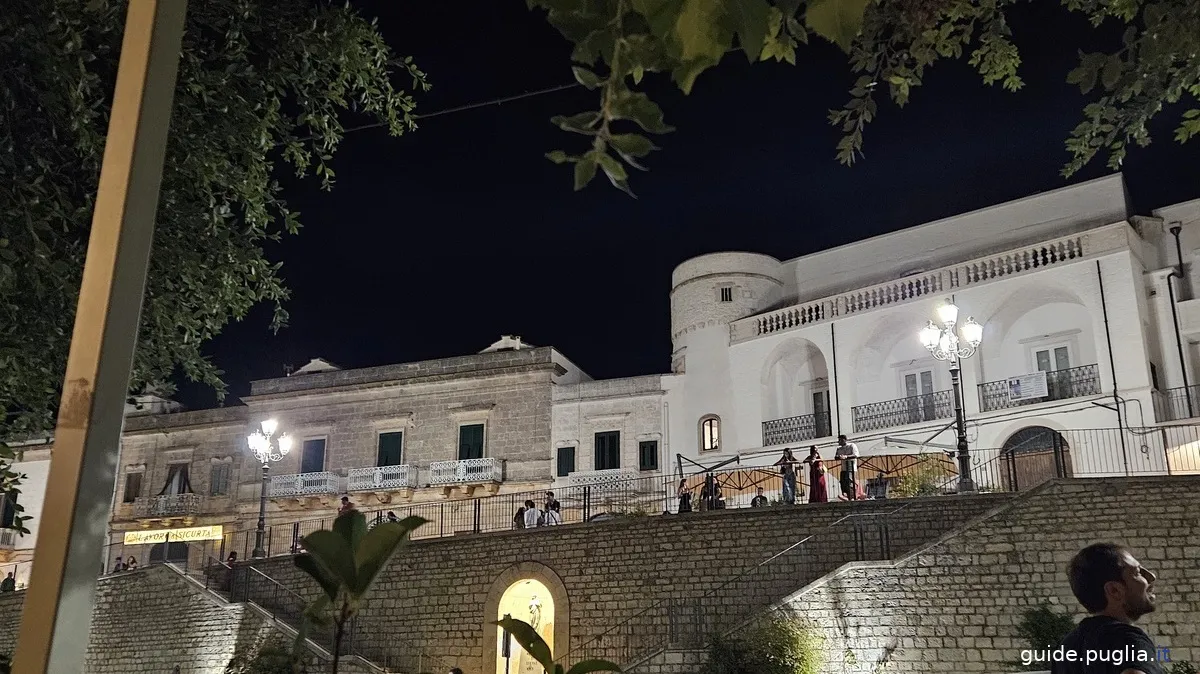
The Ponte della Madonnina is located in an area that could be considered peripheral to the heart of Cisternino’s historic center, but it is still very frequented by both residents and visitors.
Chiesa di Cristo
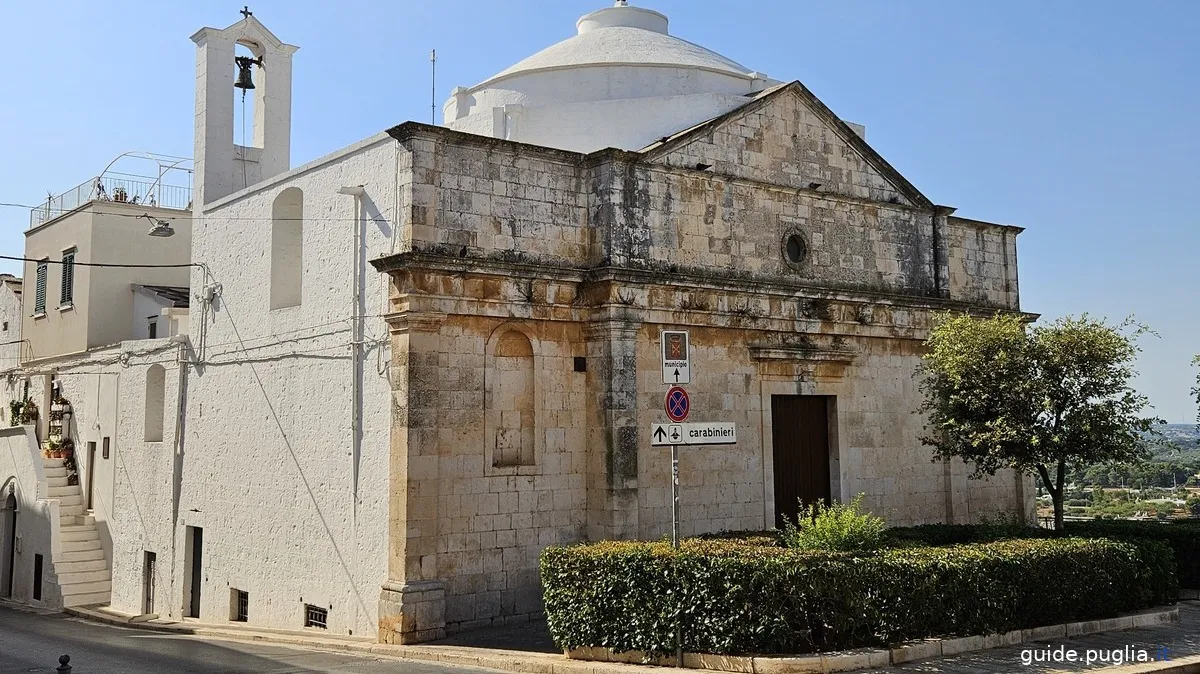
The Chiesa di Cristo dates back to the 16th century and is linked to the devotion to Christ Crucified, one of the central figures of the Christian faith.
The church was built during a time of growing popular piety and devotion to the Crucifix.
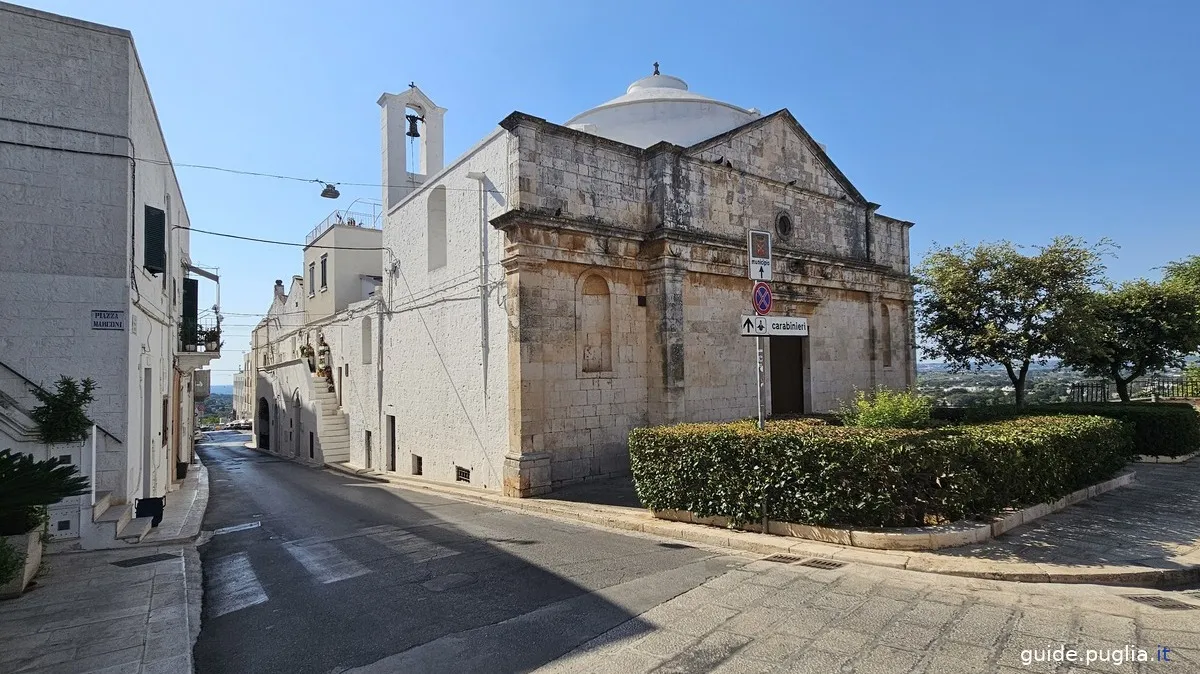
The construction of the Chiesa di Cristo reflected the community's desire to have a place specifically dedicated to the worship of Christ, a theme that was particularly relevant during the Counter-Reformation period, when the Catholic Church sought to reaffirm and spread the cult of central figures such as Christ and the Virgin Mary.
Torre dell'Orologio
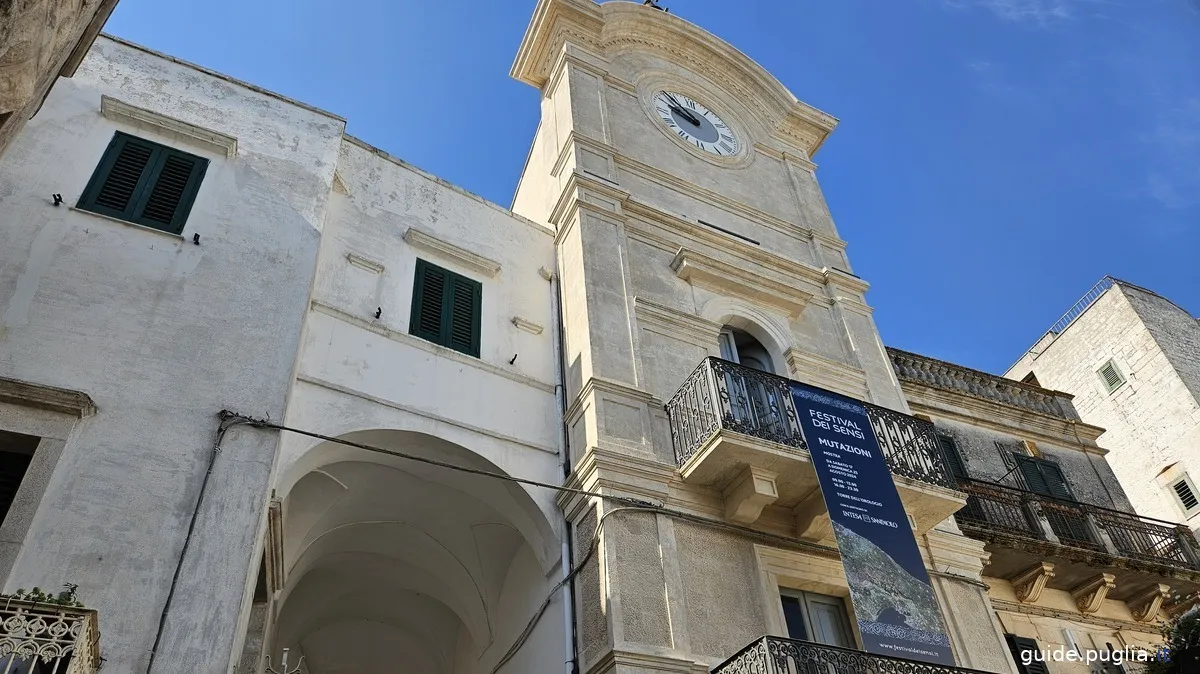
The Torre dell'Orologio of Cisternino is one of the most beloved and recognizable symbols of the town, located in the heart of the historic center, in Piazza Vittorio Emanuele II.
This central square is a place of great significance for the local community, and the tower, with its imposing presence, dominates the landscape, representing a visual and cultural landmark for anyone walking through the streets of Cisternino.
Built in 1819, the Torre dell'Orologio was erected during a period of urban renewal when Cisternino was seeking to modernize and beautify itself. The need to equip the town with a public clock arose from the necessity to regulate time for the entire community, at a time when personal clocks were rare.
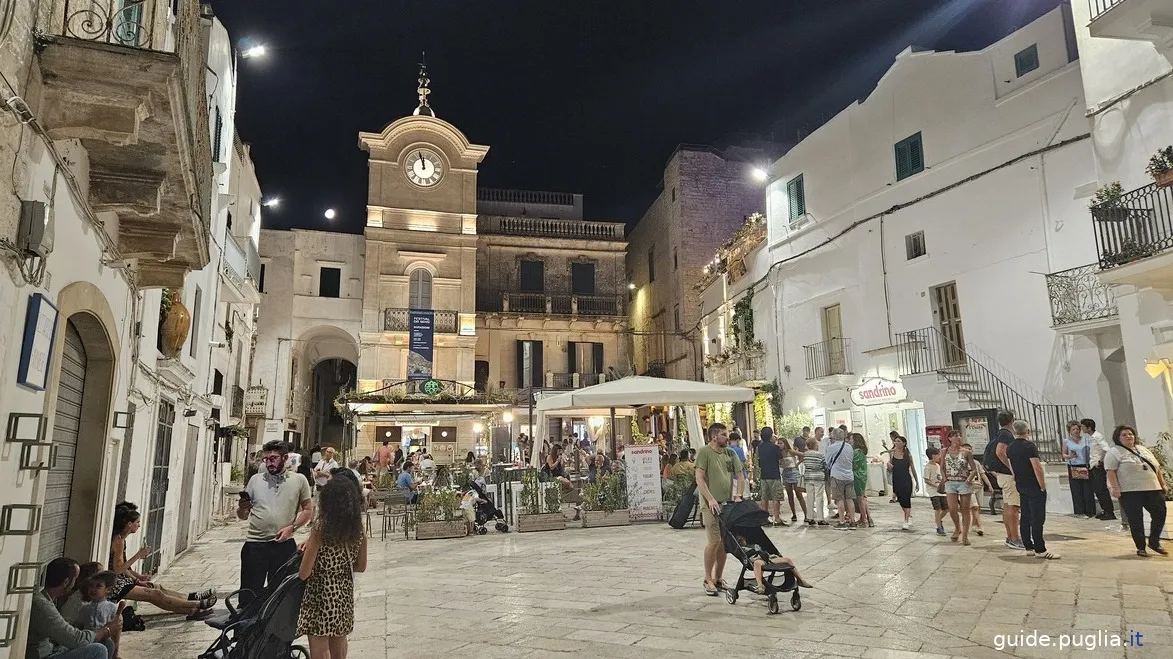
The architectural style of the tower reflects the neoclassical taste of the era, with clean lines and simplicity that gives the building a timeless elegance.
Unlike medieval towers, built primarily to defend the town, the Torre dell'Orologio symbolizes civil power and technological progress. The mechanical clock at the top of the tower is still perfectly functional and visible from various points in the town, marking the time for the inhabitants and creating a link between past and present.
Every hour, the bells of the tower resonate throughout the town, a familiar sound that accompanies daily life and marks the rhythm of the day.
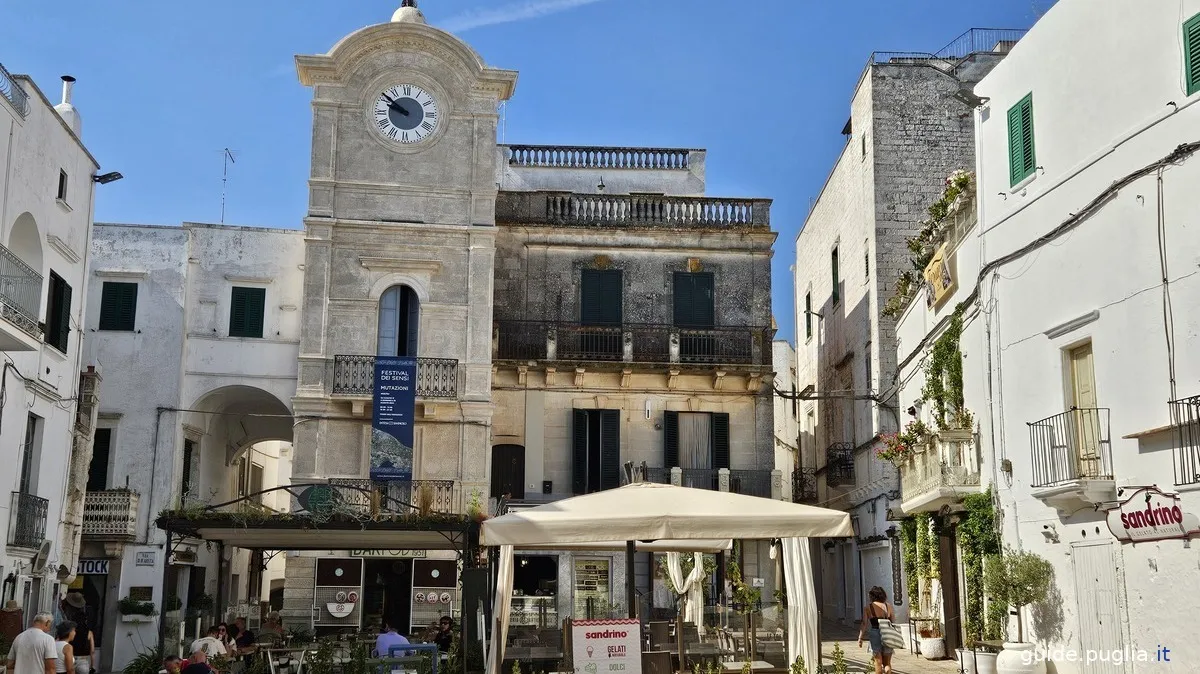
Although the tower is not always accessible inside, it nevertheless attracts the attention of visitors and tourists, who can admire it from the outside during their visit to Piazza Garibaldi.
Its majestic presence and historical importance make it an essential element of Cisternino’s cultural heritage, a symbol that unites tradition with modernity, and that continues to represent the identity of the local community.
I Giardini di Piazza Garibaldi
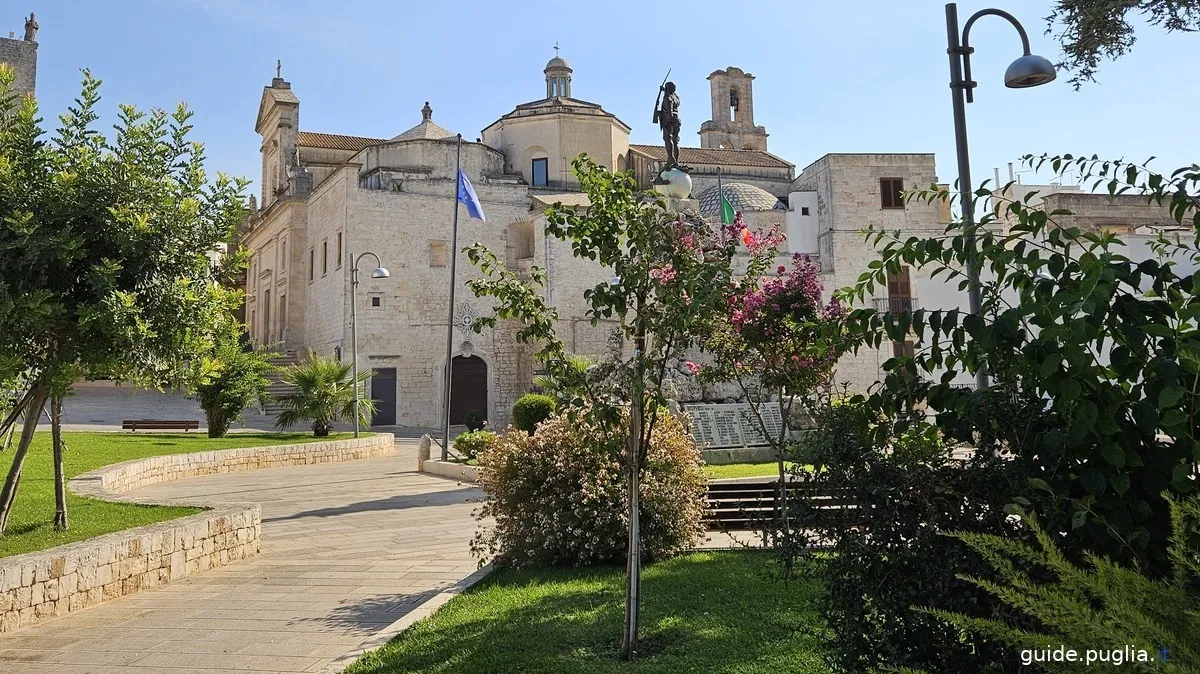
Piazza Garibaldi is enriched by a green area that offers a pleasant space for relaxation and gathering for residents and visitors. The gardens, well-maintained and cared for, are an oasis of tranquility in the heart of the historic center, with flower beds, shady trees, and benches where one can stop and enjoy the surrounding view.
This green space is particularly appreciated during the warmer months, when it becomes an ideal place for walks and moments of outdoor leisure.

In the center of the Piazza Garibaldi gardens stands a statue of Giuseppe Garibaldi, an Italian national hero known for his crucial role in the process of unifying Italy. The statue is a tribute from the community of Cisternino to Garibaldi, symbolizing freedom and patriotism.
Depicted in a proud and determined stance, Garibaldi is represented with his characteristic combat attire, including a cloak and the typical hat, elements that make him immediately recognizable.
Masserie

Cisternino is full of ancient Apulian Masserie nestled in the lush surrounding countryside.
One of the best things to do on a vacation in Cisternino is to rent a Masseria in the countryside around the town.
You can enjoy the best of the Apulian countryside within traditional structures equipped with all the comforts, allowing you to appreciate even more what the territory has to offer.
In any case, you can visit some of the traditional rural houses, representative of the typical "Masserie da Campo" of Apulia, such as Masseria Montanaro, Masseria Montereali, Masseria Costa, Villa Cenci, and Masseria Devitofranceschi.
In many masserie open to the public in the countryside of Cisternino, enogastronomic services are also offered, welcoming guests seeking refreshments in their bar, a meal with local products in their restaurant, or the services of their agriturismo.
Bosco Monti Comunali
Located not far from the town center of Cisternino, the Bosco Monti Comunali is easily accessible for residents and tourists. The Bosco Monti Comunali is a forest covering over 400 hectares on the hills that rise from the sea to reach the town of Cisternino.
The forest is dominated by a variety of plants typical of the Mediterranean maquis. Among the most common tree species are oaks, holm oaks, and downy oaks, along with other evergreen plants. In spring and summer, the underbrush is enriched with spontaneous blooms, adding color to the landscape.
The Bosco Monti Comunali is a habitat for numerous animal species, including small mammals, birds, and reptiles. You can spot foxes, porcupines, badgers, and various bird species, including both diurnal and nocturnal birds of prey.
The forest is a popular destination for hikers and trekking enthusiasts. There are trails winding through the area, offering routes of varying difficulty. These trails allow you to explore the forest safely, enjoying its natural beauty and tranquility.
Trulli
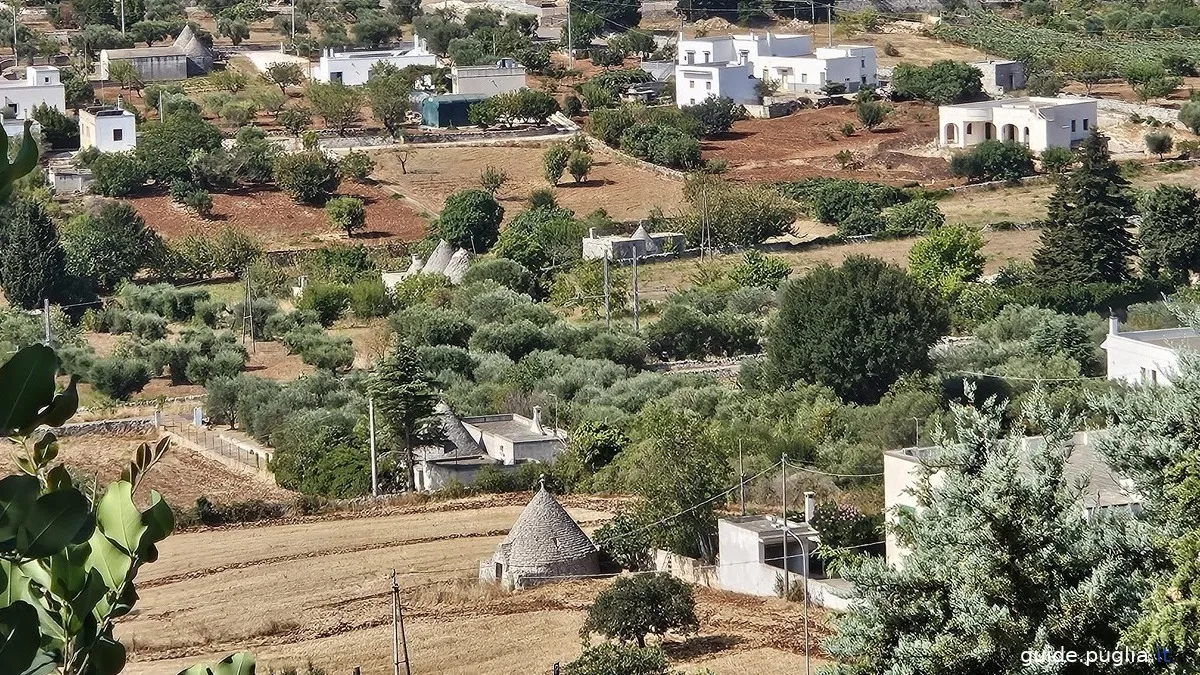
Trulli are traditional dry stone dwellings typical of the Apulia region, especially in the Valle d'Itria. These structures are recognized for their unique shape and have been a UNESCO World Heritage site since 1996.
Trulli are built entirely of limestone, abundant in the region. The stones are gathered from the surrounding fields and used without mortar, using a technique known as "a secco". This technique, in addition to being economical, allows for great flexibility in construction.
The main characteristic of trulli is their conical roof, built with concentric rows of limestone slabs called "chianche". These stones are arranged in such a way that the roof is self-supporting and does not require internal supports.
You can admire thousands of them in various arrangements, either grouped or isolated.
Traditionally, they were inhabited by the farmers of the area.
Today, some of them are still inhabited by locals, but others have been made available for travelers visiting Cisternino.
History of Cisternino
The roots of Cisternino reach back to the Paleolithic era, as evidenced by the prehistoric tools found in the area. These artifacts offer a glimpse into the early human communities that inhabited these lands, using primitive tools to hunt and survive in a rich and varied natural environment.
Over the millennia, the area continued to develop, passing through the Bronze Age, when the first stable communities began to form.
During the Roman period, the Cisternino area prospered, integrating into the vast agricultural and commercial system of the empire. However, with the fall of the Roman Empire, the area suffered looting and destruction, particularly by the Goths. This was a period of great instability, leading to a temporary decline in settlement.
The repopulation of the area began in the Middle Ages, thanks to the work of monks who, attracted by the discovery of an ancient paleochristian temple, decided to settle in the area. On this ancient temple, around the year 1000, the monks built the Romanesque Church of San Nicola, which became the spiritual and social heart of the nascent village.
From this moment on, the Cisternino area began to develop as a small but significant religious center, becoming a bishopric.
From this religious and communal core, Cisternino gradually expanded, developing over the centuries into the charming village we know today.

The historic center of Cisternino, with its whitewashed houses, narrow alleys, and stone architecture, tells a story of continuity and adaptation, where Byzantine, Norman, and Renaissance influences blend harmoniously.
The ancient history of Cisternino is still alive, not only in its traditions but also in the continuous archaeological discoveries that emerge from its countryside. These finds, belonging to various historical periods, are testimonies of a past that saw the succession of different civilizations, each of which left its mark on the cultural fabric of the territory.
Traditions and Gastronomy
Today, Cisternino is also renowned for its culinary traditions, particularly for its bracerie and local butcher shops, which, open even in the evening, attract visitors with the enticing aromas of "bombette".
These small meat delicacies, typical of the town, represent the essence of Apulian cuisine, simple but rich in authentic flavors. Bombette have become a gastronomic symbol of the village, attracting food lovers from all over Italy and beyond.
Cisternino Beaches
The nearest beaches to Cisternino are about 10 km from the town center and are easily reachable by public transport or even more quickly with a rental vehicle.
Returning to the hills in the evening after a hot day at the beach allows you to enjoy the cool summer evening breeze of the countryside, finding yourself in a paradise compared to the hot and humid air on the coast.
From the center of Cisternino, the closest beaches are Torre Canne to the north and the beaches of the Parco Naturale Regionale Dune Costiere, which stretches from Torre Canne to Torre San Leonardo.
Further south begins the Costa Merlata, a series of beaches alternating with rocky coastal stretches, such as the beaches of the Oasi Naturale di Torre Pozzella, embraced by the typical Mediterranean maquis.
Visit the Valle d'Itria
Cisternino, along with Alberobello and Locorotondo, offers the same experiences and sensations that can be felt throughout the Valle d'Itria.
The Valle d'Itria is a lush area, rich in woods, wild landscapes, and Mediterranean hilly nature.
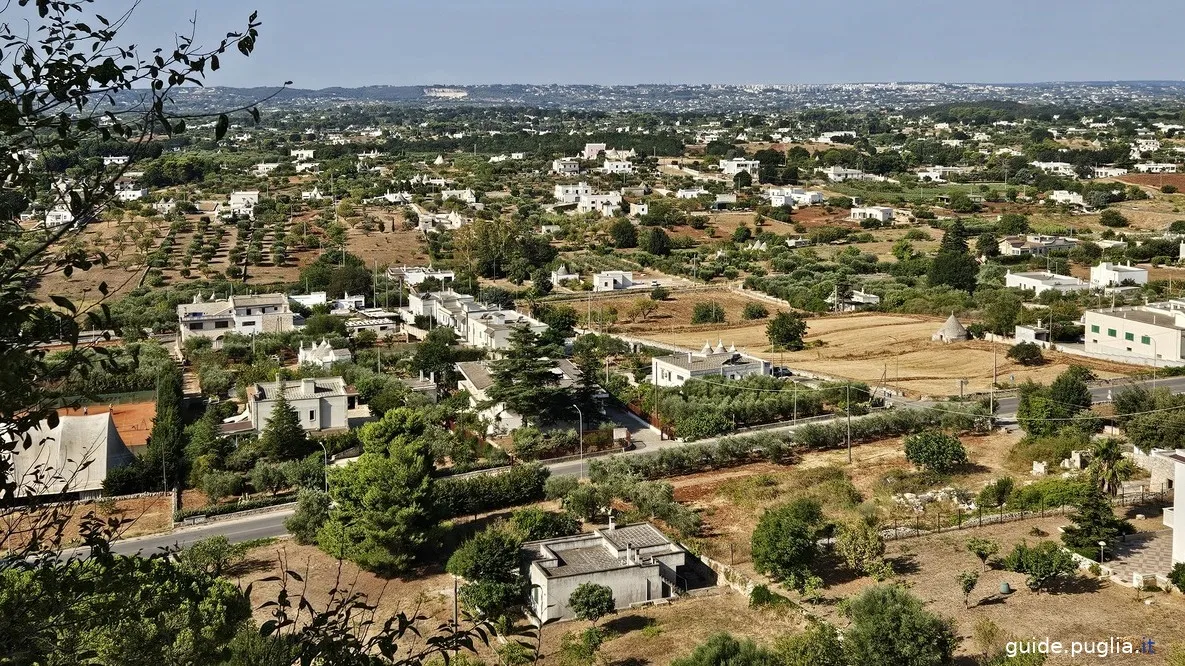
The Valle d'Itria is characterized by the presence of beautiful small towns with white stone houses and the unique structure of the Trulli.
A few kilometers from Cisternino, you will find Locorotondo and Alberobello, which you can reach in just a few minutes by car.
